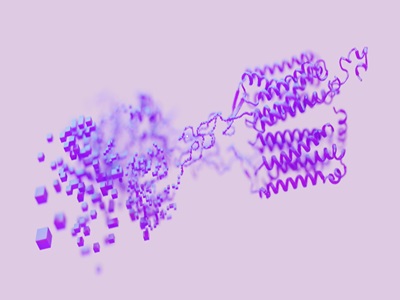Modular Peptide Binding Proteins by Superhelical Matching
The solution is a universal method for de novo design of proteins made of repeating units that bind peptides with repeating sequences, with a one-to-one ratio of protein repeat units and peptide repeats.
What is the Problem?
Peptide binding proteins play important roles in cellular processes including signaling pathways, immune responses, and protein degradation. These proteins have specific binding sites that recognize and bind to peptides with specific sequences or structural features. The development of methods to design peptide binding proteins would be highly useful across proteomics and synthetic biology applications. However, the design of peptide binding proteins remains challenging because most peptides do not have defined structures in isolation and hydrogen bonds must be formed to the concealed polar groups in the peptide backbone.
What is the Solution?
The solution is a universal method for de novo design of proteins made of repeating units that bind peptides with repeating sequences, with a one-to-one ratio of protein repeat units and peptide repeats. This technology uses geometric hashing to detect protein backbones and protein-peptide docking configurations that are compatible with the formation of bidentate hydrogen bonds between the protein’s side chains and the peptide backbone. The remainder of the protein sequence is optimized to drive folding of the protein to the desired structure and to enhance its peptide binding affinity.
What is the Competitive Advantage?
The competitive advantage of this technology lies in its ability to computationally design peptide binding proteins for a broad range of repeating and non-repetitive peptide sequences. The peptide binding specificity of the protein can be adjusted by altering the binding interface of individual repeat units to achieve specificity for non-repeating peptide sequences and for the disordered regions found in native proteins. This technology provides a general approach to designing proteins with targeted binding specificity for a broad range of repeating and non-repetitive peptide sequences.
Patent Information:
-
expand_more mode_edit Authors (1)David Baker
-
expand_more library_books References (1)
- Wu, K., Bai, H., Chang, Y. T., Redler, R., McNally, K. E., Sheffler, W., Brunette, T. J., Hicks, D. R., Morgan, T. E., Stevens, T. J., Broerman, A., Goreshnik, I., DeWitt, M., Chow, C. M., Shen, Y., Stewart, L., Derivery, E., Silva, D. A., Bhabha, G., Ekiert, D. C., Baker, D. (2023), De novo design of modular peptide-binding proteins by superhelical matching, Nature, 616, 581-589
-
expand_more cloud_download Supporting documents (0)
